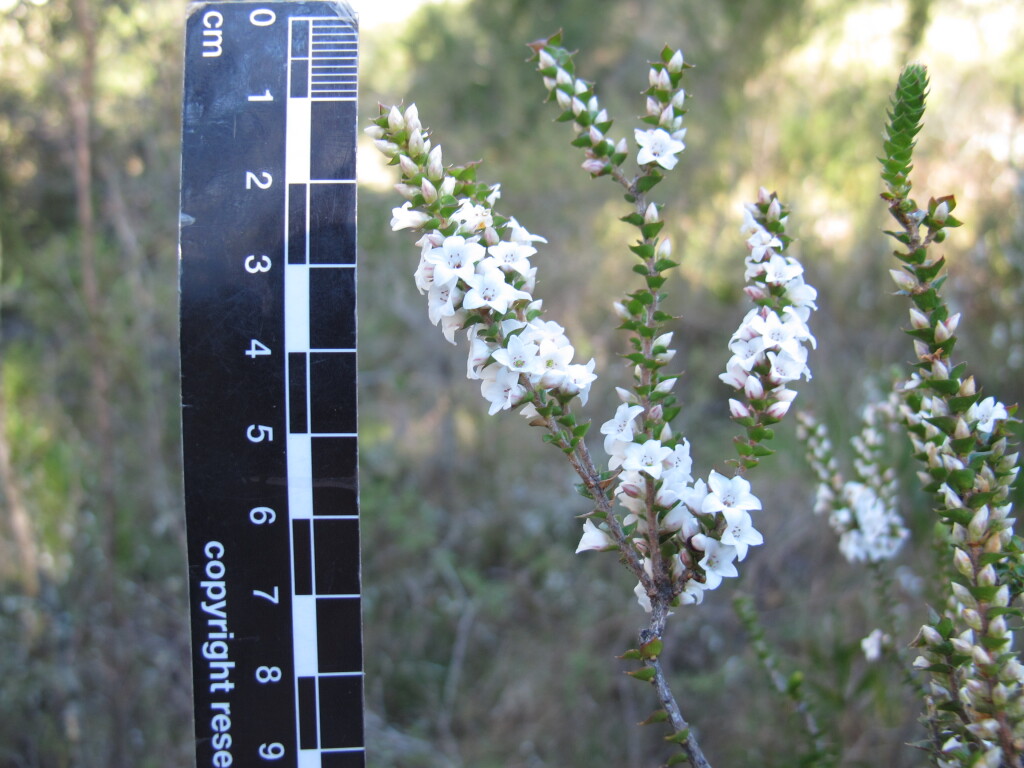Epacris gunnii
Hook.f.Ascending to erect shrub to c. 1 m high. Branchlets puberulent to shortly villous. Leaves ascending to spreading or reflexed, concave, venation indistinct, broadly ovate, 2–6.5 mm long, 1.8–5.5 mm wide, glabrous; apex shortly acuminate, ± pungent, straight or somewhat incurved; margins minutely serrulate; base cordate or rarely almost obtuse-truncate; petiole 0.2–0.5 mm long. Flowers subsessile to pedicellate in axils along branches; bracts 12–21; sepals ovate to ovate-elliptic, 2.2–3 mm long, obtuse; corolla white, tube 1.2–2 mm long, shorter than the calyx, lobes 1.7–2.7, obtuse; anthers exserted or partly exserted; ovary glabrous, nectary scales truncate, style straight-sided, 0.4–1 mm long, glabrous. Flowers any month at lower elevations, Oct.–Feb. at higher elevations.
GipP, OtP, NIS, EGL, EGU, WPro, HSF, HNF, MonT, HFE, VAlp. Also NSW, Tas. Typically a species of montane to alpine (usually wet) heathland or grassland, but also occurring at several lowland locations in swampy vegetation (e.g. Lilydale where now very rare, Lang Lang, Wonthaggi, and a disjunct occurrence in the western Otways).
Albrecht, D.E. (1996). Epacridaceae. In: Walsh, N.G.; Entwisle, T.J., Flora of Victoria Vol. 3, Dicotyledons Winteraceae to Myrtaceae, pp. 464–509. Inkata Press, Melbourne.
 Spinning
Spinning

